Kerala Sadya is a complete diet which is quite popular among foreigners also. Kerala and its traditional vegetarian Sadya served on banana leaf is combo to one another. Do you know there is a specific rule for the arrangement of different items on banana leaf, and it differs in dishes and arrangement from north to south end of Kerala? It’s an amazing combination of sweet, salt, sour, chilly and other variants of tastes and a typical Kerala sadya can include 15-25 or more items of curries and sweet payasams.
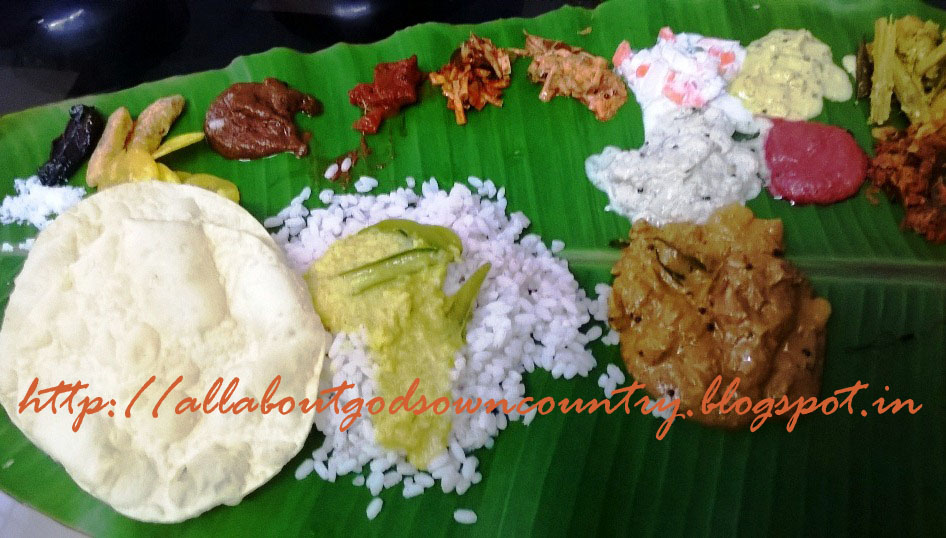
Typical Kerala Sadya
Have you ever thought if there is any nutritional fact hidden behind the dishes? Yes, they have. Also order of taking side dishes aside rice and payasam is also significant, though only a few people follow the rules. There are scientific explanations behind the order of intake of food ingredients of Kerala sadya, and if you are able to follow the rules, its positive results are double. All the negative facts of excess sugar and daal are almost neutralized by a few dishes in the sadya, it’s amazing to know.
Order to eat dishes from banana leaf – From left to right
Old people say – one should eat sadya so that it should never distract normal digestive system of our body. One should eat moderate, and start with sweet Sharkkara Upperi.
Then serve rice first with Paripp Curry (dal), ghee and pappadam (pappad), followed by Sambar and rice with Pachadi, Erriseri, Avial and in banana leaf too, those curries are placed in that orderly manner.
Kurukk Kalan or Kalan is served after Sambar and it’s a normal procedure to eat Kurukk Kalan after Sambar. Olan, Kichadi and Pappadam can be consumed along with this. While Kurukk Kalan is an integral part of Thrissur Sadya and served along with side dishes, it’s rarely served in Thiruvananthapuram areas and south Kerala. Here Olan is served with Pine apple pulissery soon after all payasams and pradhamans are served. Payasams are served after two curries – Paripp and Sambar in these places, while Paripp is rarely served in middle Kerala, particularly in Ernakulam and Thrissur areas. Sometimes, it’s placed as a side dish on banana leaf in these places.
Later rasam can be served with rice, and side dishes like thoran and mizhukk puratti can be taken along with it. While mizhukk puratti is frequently served in Thrissur sadya, it’s rarely served in south Kerala sadyas. In south Kerala while payasam served after sambar, in other places, it may be served after three or four servings of rice.
Banana is the best combo for payasams/pradhaman with jaggery as main ingredient while a few prefer to use pappadam as its combo. While banana is served along with Thiruvananthapuram sadya, and people use it as a perfect combo of sharkkara payasams/pradhamans, it’s rarely served in Thrissur sadya. Instead people serve banana after sadya is over, and payasam too is served in glasses than banana leaves.
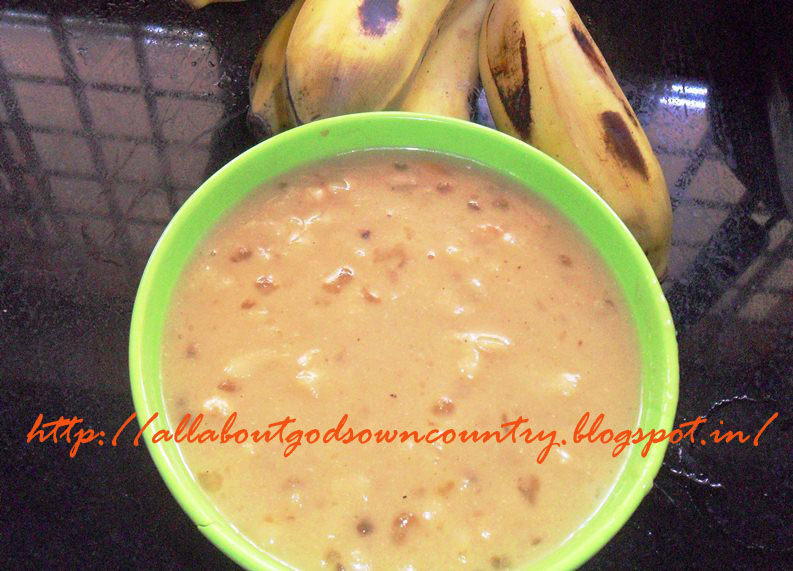
Ada Pradhaman
Milk added payasams/pradhamans like Palada, Rice or Vermicilli are served after jaggery payasams, and yellow coloured boondi/boli are served along with it. The difference between payasam and pradhaman is that pradhaman is single boiled, while payasam is double boiled. Payasam with jaggery added for sweetness instead of sugar can be used for many days, while milk payasams may damage easily.
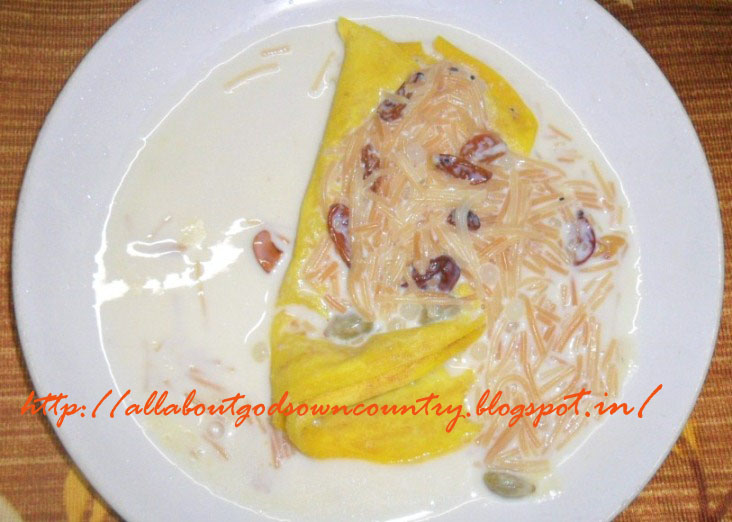
Vermicilli Payasam with Boli
After payasams, one should stop eating by serving a little rice with buttermilk, and your favourite pickle may be chosen for side dish. Later eat sharkkara upperi, banana or pazham nurukk (cooked banana) and fold the leaf to complete sadya.
I would like to discuss all those interesting facts in detail during another occasion, and through this column I would like to go through the positive effects of a few side dishes of Kerala sadya.
Inji Curry (Ginger Curry) equivalent to 101 curries
There is one story linked to Inji curry and Pandit Vararuchi. As per legend, when Brahmin Vararuchi asked a family to prepare 100 curries for a meal, the couple’s adopted daughter served him with ginger curry as it is equivalent to 100 curries. Impressed by her intelligence, Vararuchi married the girl.
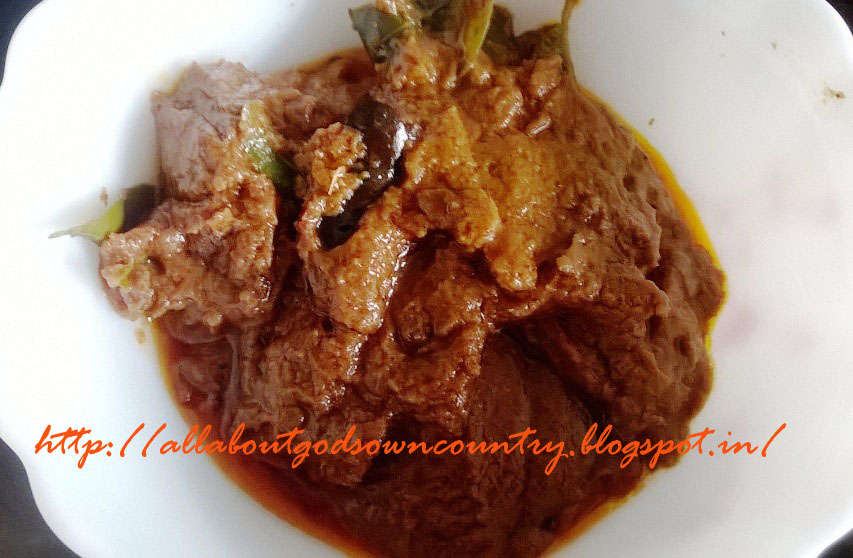
Inji Curry
Yes it is! Ginger is an ingredient of almost all north Indian side dishes, and also south Indian non- vegetarian dishes or spicy vegetarian dishes. While Inji curry is served in south Kerala dishes, a little sweet is added to make Puli Inji, and served in Thrissur and north Kerala. Both these side dishes have distinct taste. It’s placed on the left side of banana leaf, along with pickles like green mango, vadukapuli etc.
Nutrition Value:
As it is fiber rich, it increases digestion and Vitamin C and Antioxidants are the major nutritional factors associated with it. Read the preparation of Puli Inji here.
Pine Apple Kichadi – To reduce blood pressure
It’s one of the sweet side dishes of Kerala sadya. Pine Apple pulissery is served in Thiruvanathpuram sadya, soon after payasams. Kichadi is also made using beetroot, pumpkin, mango fruit, ripen banana, bitter gourd etc. Jaggery or raisins are used to enhance taste and sweetness to these sweet dishes. Mustard is also added for its gravy to get distinct aroma and taste.
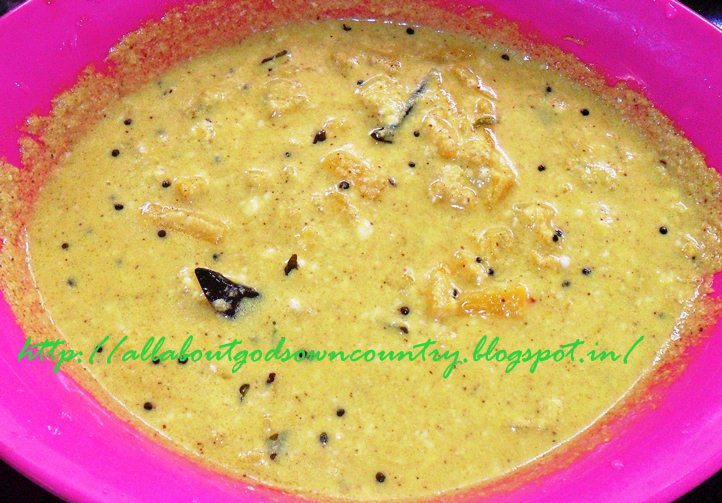
Pine Apple Pulissery
Nutrition Value: Vitamin C and B are major ingredients of pineapple which help to reduce blood pressure. As mustard is also grind and add to Kichadi, its nutrient value is never lost.
Sambar – Abundant in Vitamins
A typical Tamil Nadu dish, it is made in a wide range of ways and it is equally popular in North and South Kerala. It’s mostly served with idli and dosa, and also with plain rice. Palakkad Sambar includes raw coconut in its gravy, while Thrissur people roast and grind coconut to their sambar. South Kerala sambar never uses coconut.
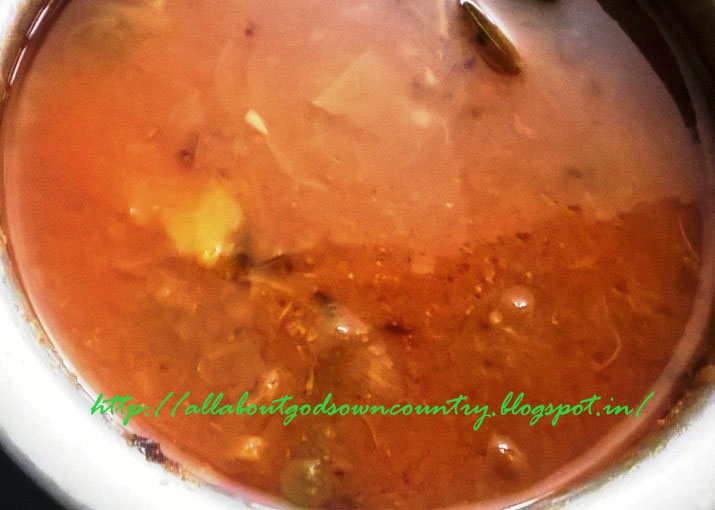
Sambar
Nutrition Value: As sambar is an amazing combination of dal and vegetables, its nutrition content is extremely high similar to avial, another popular side dish of south India. It’s fiber rich, very tasty and abundant in vitamins. Lycopin of tomatoes help to dissolve fat while asafoetida neutralizes the gas in daal. Asafoetida also enhances digestion.
Avial – Rich in fiber
Similar to Sambar, avial is a mixture of so many green vegetables and high in nutrition content. Unlike sambar, raw banana forms the major ingredient of Avial. To add sour taste, raw tomato or a little curd is also added, though it is optional.
Nutrition Value: As almost all vegetables are included, it is rich in fiber and vitamins, and it also prevents upset of stomach after the heavy sadya.
Protein rich Paripp (Daal)
Paripp curry using green gram daal is an integral curry of south Kerala sadya, and it is served in southern areas – Thiruvananthapuram, Kollam, Kottayam etc. It’s only optional in the mid-Kerala. Paripp curry with ghee is the first curry served in the south Kerala regions, and it is served along with pappadam.

Paripp Curry
Nutrition Value: Daal is rich in proteins, and as it is cooked with turmeric powder, curcumin also reaches human body. Curcumin is rich in anti-oxidants which help to absorb toxic substances of the body. Its combination with ghee is an amazing combination and healthy too.
Thrissur’s special – Kurukk Kalan
Thrissur’s sadya is known for olan and kalan, which forms the major part of side dishes. An integral part of Thrissur sadya, it can be placed outside fridge for two days as it is thick (kurukkiyath). It’s called rasa kaalan in south Kerala, and very often served Pine apple pulissery as the substitute of Kurukk Kalan in these areas. Kurukk Kalan is thick in content comparing pulissery.
Olan with the taste of coconut milk
It’s an extremely popular dish of mid Kerala, preparing using red beans, white gourd and coconut milk. It’s easy to make. In south Kerala, it’s served as the side dish of Pulissery after payasams are served.
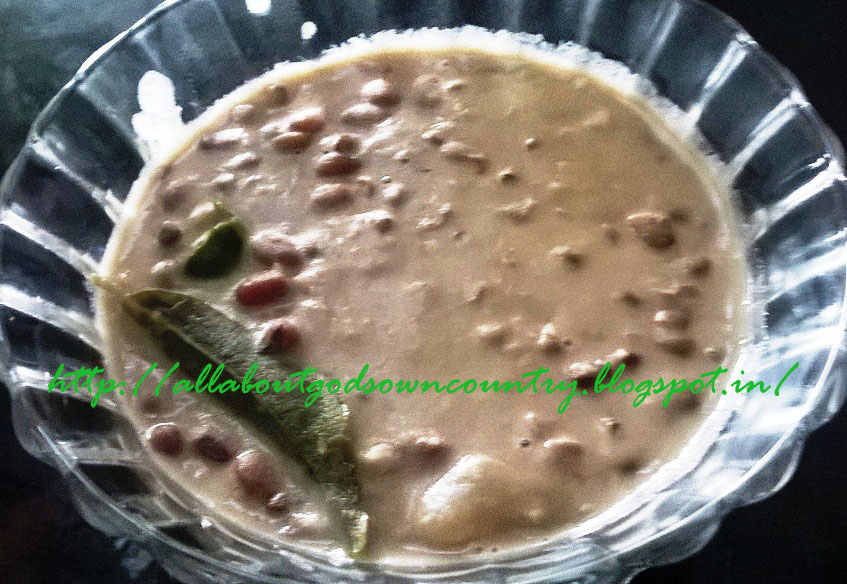
Olan
Nutrition Value: As white gourd is used for the dish, it reduces the gas associated with red beans.
King of tastes – Erisseri
Adding fried coconut to it gives a distinct taste and aroma. It’s associated with Thrissur sadya, similar to Kurukk Kalan and Olan. Long beans, elephant yam and pumpkin are the major ingredients of Thrissur Erisseri.
Read to know the method of preparation of Erisseri
Before I conclude
It’s a tedious process to prepare a sadya with 15-20 items. But it’s deeply associated with Kerala’s traditional values and culture, when it is served on a banana leaf, and have it with your family members, relatives or friends on special occasions like Onam, Vishu, marriages etc. In those old nostalgic days of my childhood, banana leaves were placed on floor, family members sit on mats with legged crossed, and have sadya with small chats and funs together. But now, only a few prefer to eat sadya by sitting on flour.
Only tip of banana leaf is used to serve meals, and should face the left hand side of the person. Pappadam is placed on left end side, and banana on its top. Bananas (Jnali Poovam or Palayankodan) of small types are served based on the number of jaggery payasams served for sadya. In some places, salt powder is placed on the rightside of pappadam.

Paripp Payasam
As per rules, sharkkara upperi is placed on left top of the leaf and banana chips just below it. From there on side dishes starting with ginger, pickles, kichadi, pachadi, thoran, avial etc are placed.
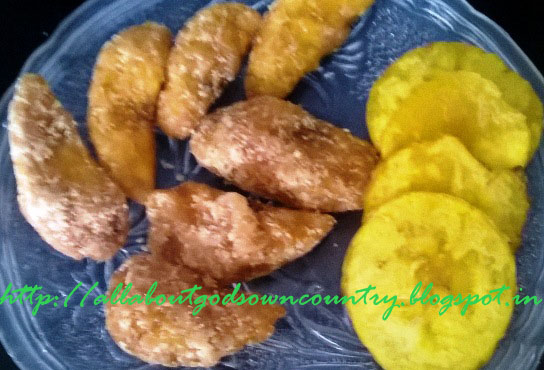
Sharkkara Upperi and Chips
I shall add a few more articles to this interesting category very soon.






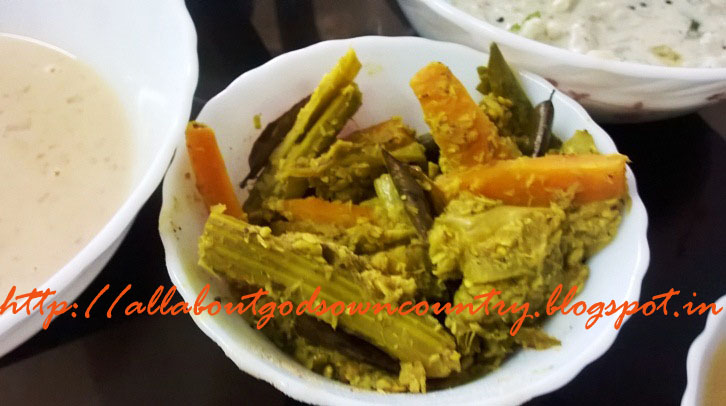





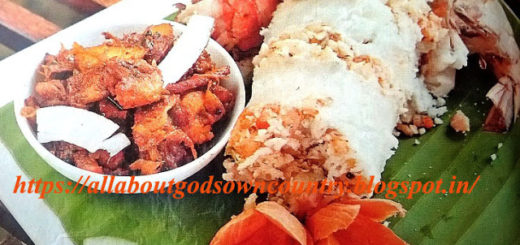
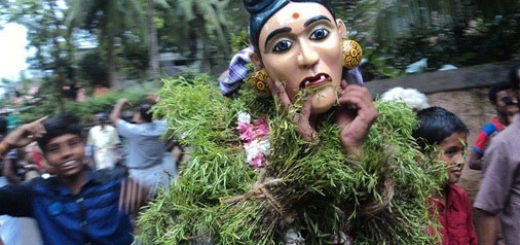









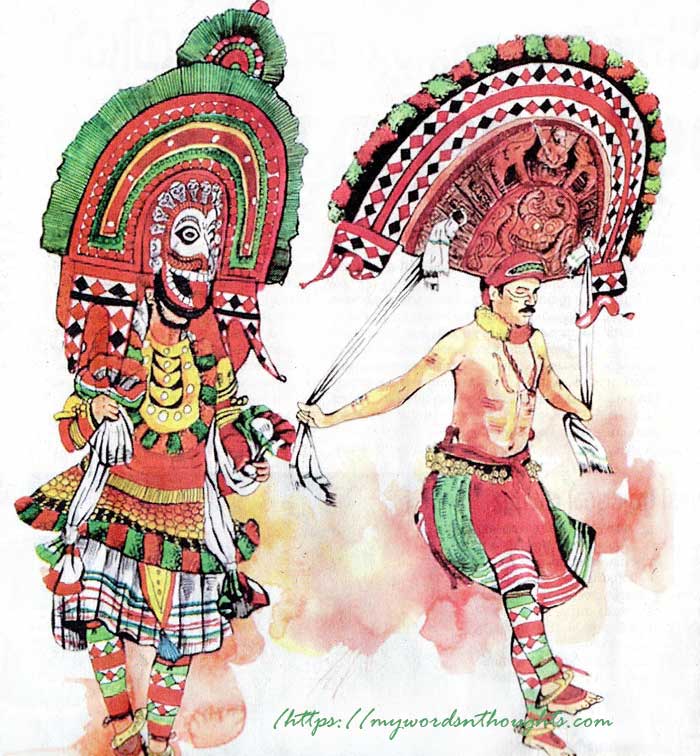

Recent Comments